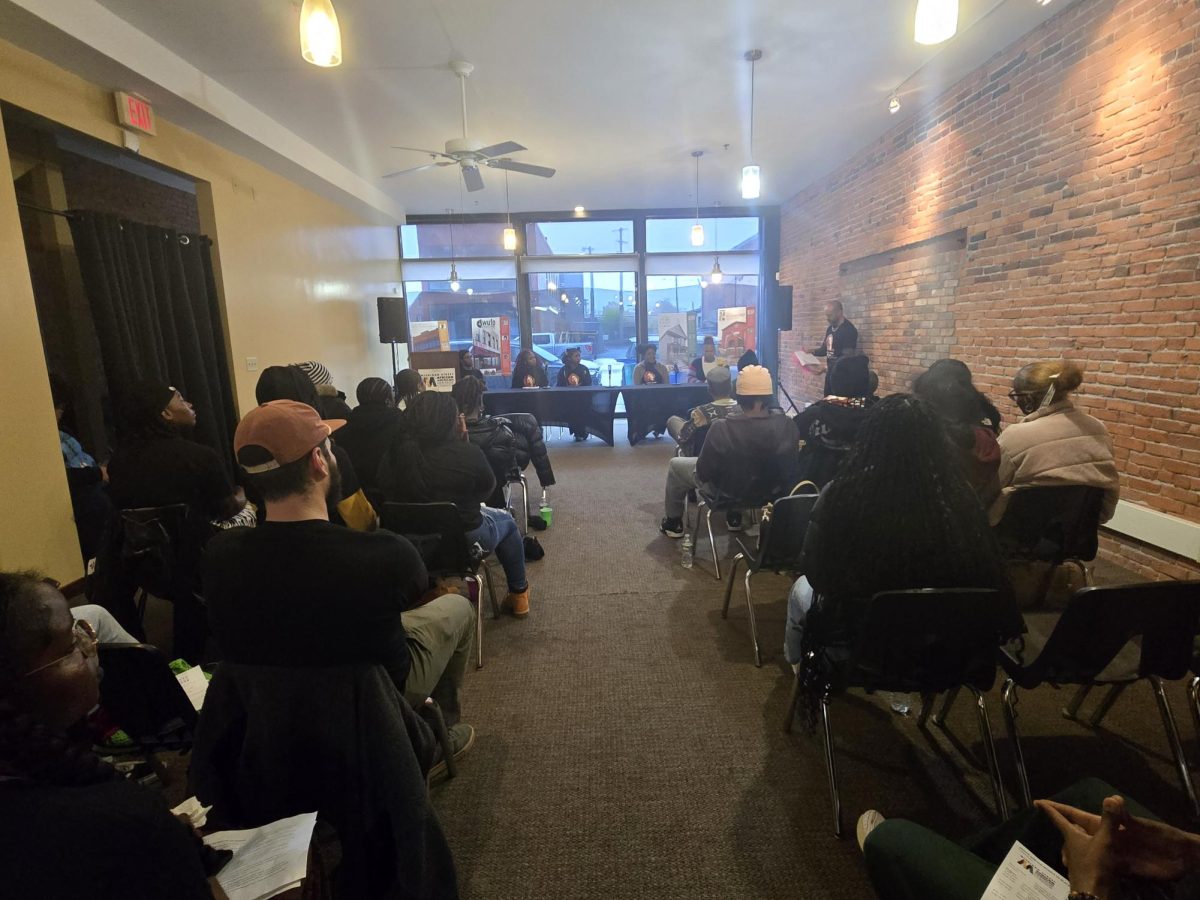‘Fast fashion’ produces more styles, less quality
May 7, 2014
We’re all guilty of it: When we’re low in spirit and tight on cash, we hit up the same few places for retail therapy. Target, the place with something for everyone; bright, loud, trendy, Forever 21; H&M, the high-end store with affordable prices.
But each of these stores has contributed in some way to an industry-wide issue that affects the environment, the economy and the industry itself.
It’s called “fast fashion” – the low-cost, high-turnover method of production and sales that has seemingly overtaken the industry, creating some positive changes but also raising some concerns.
The way it works is this: quickly. Clothing brands used to have two seasons – spring/summer and fall/winter. They took a year to produce everything for their collections.
As Fashion and Textile Technology Chair Dr. Lynn Boorady explained, “Then you had four seasons. Then suddenly, you had cruise wear in there. Then this back-to-school one-shot in… Not all companies can work like that, and they don’t want to work like that.”
Fast fashion companies can turn collections around in as little as two weeks. Designers create designs to fabric bought in advance, often bought as greige goods (raw fabric) dyed to a given color or pattern, in any given amount. Arlesa Shephard, an assistant professor in the fashion department, said the fabric is also sometimes left over from a production run done by another retailer – often cheaper textiles.
They then collaborate with store managers to figure out what customers are asking for. This kind of power is relatively new for the industry, but gives fast fashion companies an advantage in that they can turn things around faster.
Prime examples of brands that employ this practice are Zara, based in Spain, and the aforementioned Forever 21. Both companies make collections that aren’t meant to be classic, but instead focus on what is in style at the moment. Moreover, they come with a price tag that make shoppers on a budget, like college students, smile.
“It’s made to be on trend, right then and there,” Boorady said. “It’s not meant to last for more than one season.”
She added that collections are usually never repeated, creating a sense of urgency in shoppers.
“So if you want that jacket, you have to buy it, because you know it’s not going to be there next week,” she said.
Buy that jacket at your own risk, though. Boorady said a consequence of fast turnaround is shoddy workmanship – spaced-apart stitches, unraveling hems and buttons that fall off quickly. Many who buy this kind of clothing usually throw it away after a few wears, and at the rate that Americans buy clothing and trash it – Ecouterre.com says the average American trashes nearly 65 pounds of textiles each year – it contributes to an environmental issue.
“A lot of people don’t know what to do with clothes, so they throw them away,” Boorady said. “And that goes inside huge dumps and stay there until, if it’s a natural fiber, it’ll eventually break down, but if it’s a synthetic fiber, it’ll stay there for a while.”
That has spurred a small movement within the industry, and even within some of these retailers. H&M, for example, has put forward a “sustainability report” complete with information on garment collecting, labor and working conditions and wages. It has also started a “Conscious – Sustainable Style” clothing line made from fabrics like organic cotton and lyocell (a cellulose fiber made from bleached wood pulp.)
Zara, meanwhile, has focused on its brick-and-mortar stores, instilling policies to reduce its carbon footprint and making stores eco-efficient.
“Today you’re starting to see fast fashion retailers making efforts to make their supply chain more sustainable,” Shephard said, explaining that in consumers’ worries about cost, the environment wasn’t as big of a concern as it is now.
There is a problem with this kind of push. The increase in demand for organic cotton, for example, can slow production, as the process to certify a fabric as organic can take a while – longer than these retailers have to turn collections around.
“They have to not use chemicals for at least three years,” Shephard said. “So it takes time for that supply to catch up with the demand.”
Making and repurposing clothes is an environmentally friendly option that is growing into its own niche market. New clothing is made from a specific amount of fabric, while existing clothes are turned into something different, conserving resources.
While not everyone has the skills to do this, Naquasia Boyd, a Junior Fashion and Textile Technology Major with a Minor in Fibers, makes and repurposes her own clothing, has her own line and thinks custom clothing contributes to a more creative fashion culture.
“My stuff is affordable and good quality because it’s custom made, everything,” she said. “But then you have to think about, ‘Well, when I get bigger, do I want to charge more or keep prices low?’ Because custom made anything is expensive.”
She added that for people to get good clothing, they’ll have to be willing to pay a little bit more for quality.
Shephard doubted the plausibility of an economy based on this type of clothing creation. Not everyone wants to create their own clothing, nor do they have access or skillsets necessary to do so. Also, buying is too engrained in our culture.
“We are an economy that is based on our consumerism,” she said. “I don’t think that’s going to be the solution.”
Another concern is labor. Fast fashion means fast and often cheap labor. Workers have been pushed to meet ever-more-quickly approaching deadlines and working long hours for little pay in bad conditions. About one year ago, a factory in Bangladesh collapsed, spurring companies to start figuring out how they can improve labor standards and prevent accidents like this from occurring again.
“When you have problems in a factory like in Bangladesh, a lot of times the first reaction from a lot of companies is to just pull out of there,” Shephard said. “That doesn’t necessarily solve anything.”
She added that H&M has worked with the government there to develop pilot factories and create a living wage for workers, which is a positive sign from one of the top retailers in the industry.
There has also been a push to bring clothing manufacturing back to nearby places, something Shephard called “near-sourcing.” For example, Zara is based in Spain, and some of their manufacturing takes place in Spain or neighboring countries like Morocco. Forever 21 has some of theirs based in Los Angeles.
“That’s actually an idea that people like, especially after all of the talk about how much is made in China and other countries that are so far away that it’s hard to regulate,” she said.
Though thrift shops, shipping clothes to developing countries and the “rag trade” (chopping up clothes for rags) are all options to help alleviate this problem, Boorady believes there is still a need to decrease production.
“We just have too many clothes,” she said. “What I would love to see is more custom production – only producing what the customer wants. So if a customer wants a black skirt with a back zipper and flared hemline, ‘in my size,’ that’s what gets produced.
“It fits the person, you’ve already sold the garment and you’re not making for an imaginary customer.”
In an ideal world, she added, every issue within the industry would be addressed, but companies should realistically listen to what customers’ concerns are and market accordingly.
“If you know exactly what the hot-button issues are in your particular target market, then I think you need to address those particular issues,” she said.
Email: rodriguez.record@live.com
Twitter: @A_Rodriguez39



